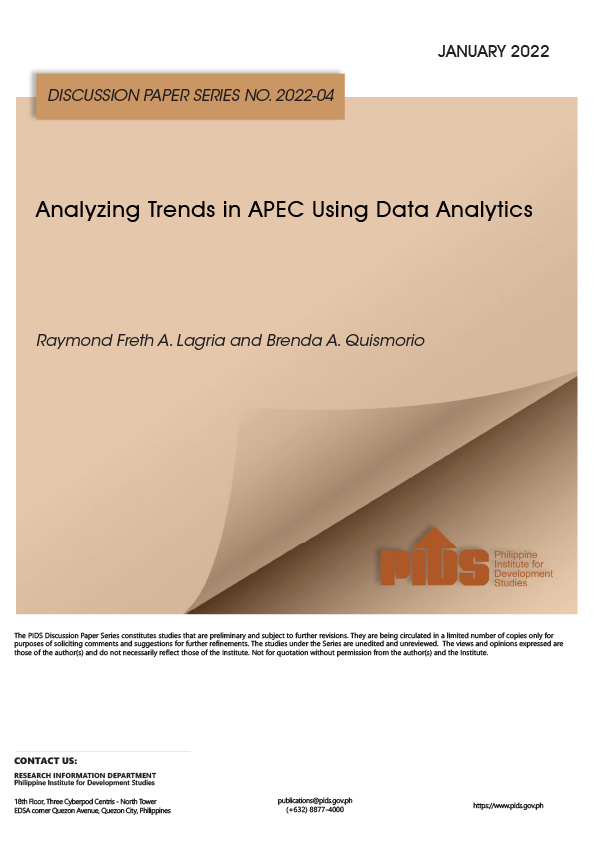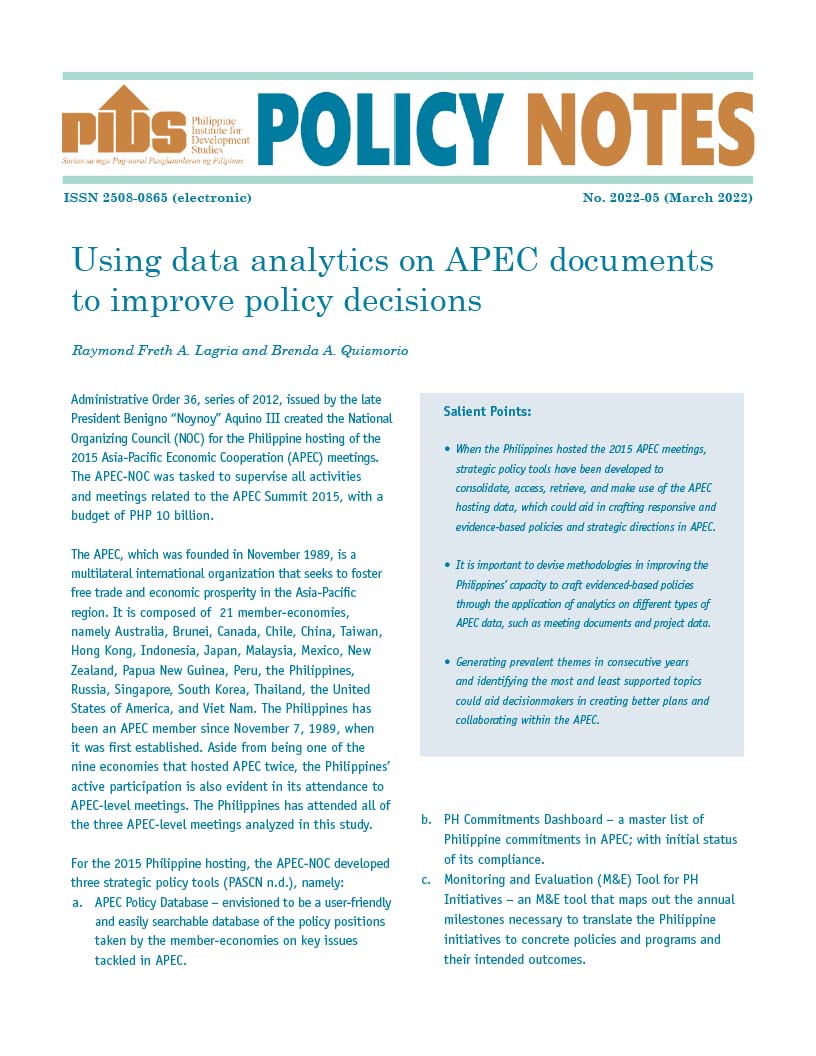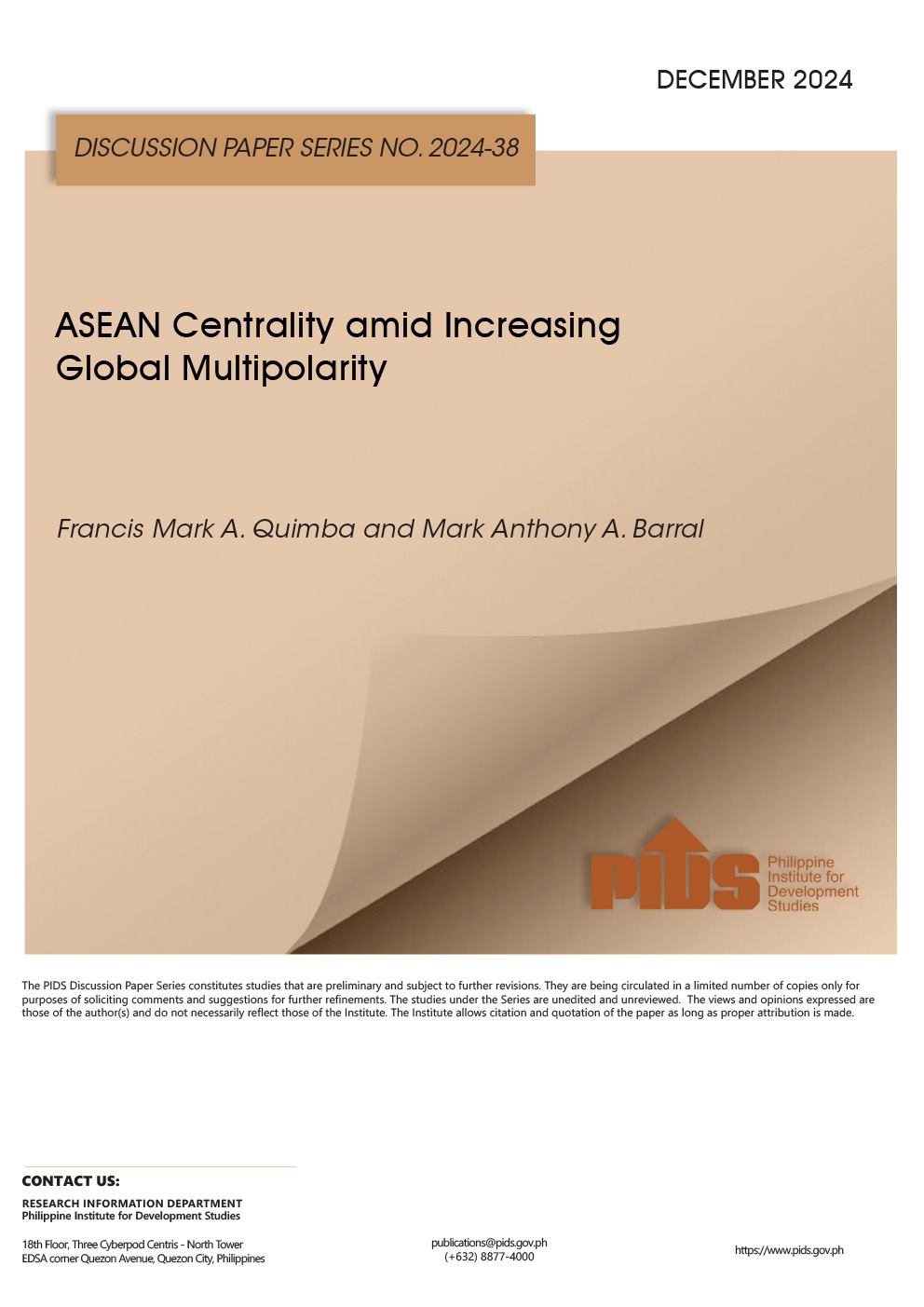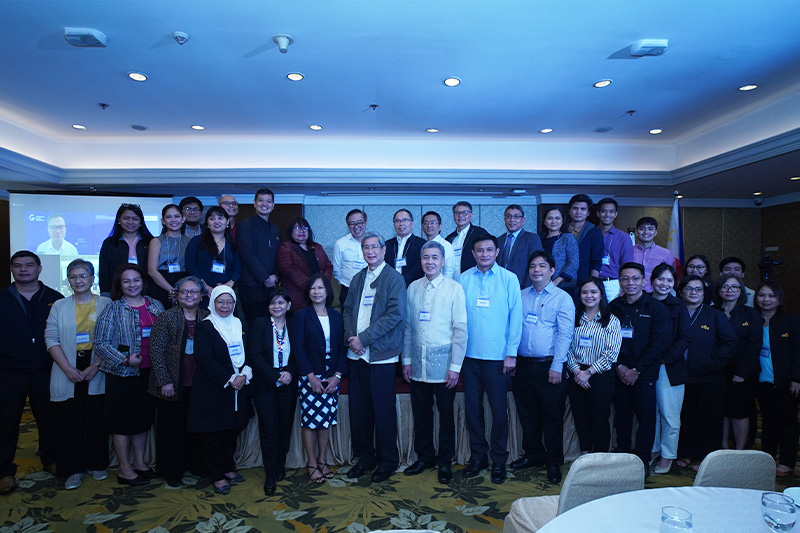THE PHILIPPINES could call for revisions in a region-wide economic integration plan after the pandemic affected its growth trajectory, the Philippine Institute for Development Studies (PIDS) said in a report.
In a research paper, How Does the Philippines Fare in Meeting the ASEAN Economic Community Vision 2025?, PIDS said that the Philippines so far is in the middle of the pack in performance against indicators set in the blueprint in 2015.
But the coronavirus disease 2019 (COVID-19) pandemic could call for a reevaluation of these goals, researchers Francis Mark A. Quimba, Maureen Ane D. Rosellon, and Jean Clarisse T. Carlos said.
“Parts of the economy and society that were affected might not deliver the expected outcomes. The ASEAN member-states could have also tweaked their respective development plans because of the pandemic like what the Philippines has done,” they said.
The ASEAN Economic Community (AEC) blueprint set in 2015 aimed for integrated economies, a competitive and innovative region, enhanced connectivity, a resilient and people-oriented region, and a global ASEAN.
Under AEC indicators, the Philippines performed well in categories like intra-ASEAN imports, private partnerships in infrastructure investment, and tariff rates on imports. But it ranked among the lowest in intra-ASEAN exports, research and development expenditure, intra-ASEAN tourist arrivals, and number of small businesses.
“While the country is generally moving toward achieving AEC goals, its performance certainly can be further improved,” the report found.
“Within ASEAN, its ranking is somewhere in the middle, placing for most of the indicators around fourth to sixth. As the Philippines is bound to become an upper-middle-income country, it cannot settle (for) the current standing and should do more work to step up the progress being made.”
The report recommended that the government assess indicators that need improvement to address bottlenecks.
The volume of trade could still improve by improving industry efficiency, while the information and communications technology sector will need more attention.
“Various aspects of the economy have become digital, and the COVID-19 pandemic highlighted the importance of internet connectivity and digitalization. The Philippines has a relatively high cost, low speed and weak internet connection,” PIDS said.
The Philippines, the report said, could tap ASEAN as a source of foreign direct investment in technology, which could help it integrate better with the region.
The Philippines could also reevaluate its plans in response to the impact of the pandemic.
The Philippine economy expanded by 5.6% in 2021, reversing the 9.6% contraction in 2020, when drastic lockdowns slowed down business and consumer activity. But last year’s growth is still lower than the pre-pandemic 6.1% expansion in 2019.
“While the National Economic and Development Authority is actively assessing the Philippine Development Plan indicators, there is a need for the entire government (including the local government units) to update plans and incorporate the AEC targets,” PIDS said.
Pandemic setbacks could prompt PHL review of ASEAN integration goals












